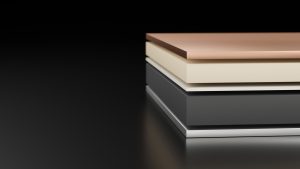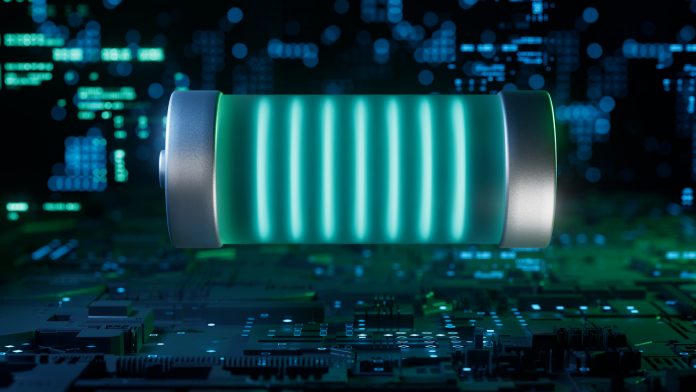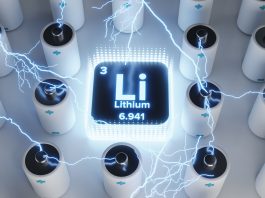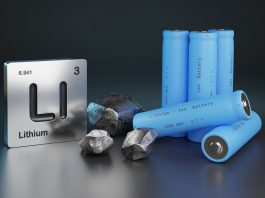A team of scientists has used X-rays to analyse the interphase of batteries, a chemical layer key to stabilising lithium metal anodes.
Demand for batteries is increasing due to their use in society’s most crucial green innovations, from electric vehicles (EVs) to renewable grid-scale energy storage. Globally, researchers are aiming to remove the bottleneck in the battery supply chain. However, for these green technologies to become widespread and practical, batteries need to pack more energy.
Now, a team of scientists led by chemists at the U.S. Department of Energy’s (DOE) Brookhaven National Laboratory, and Pacific Northwest National Laboratory (PNNL) has made breakthroughs in the interphase of the battery – the component that is crucial for boosting energy density.
The work, ‘Unravelling the convoluted and dynamic interphasial mechanisms on Li metal anodes,’ is published in the journal Nature Nanotechnology.
DOE’s focus on lithium metal batteries
Many everyday technologies, such as smartphones, rely on lithium-ion batteries due to their high efficiency and long lifespan. However, as the world transitions to clean energy, this dominating battery technology is facing challenges in more demanding applications, for example, powering EVs over long distances.
To ensure that the EV revolution can take shape, researchers across several national laboratories and DOE-sponsored universities have formed a consortium called Battery500, which aims to build a better battery for EVs. The consortium, led by PNNL, plans to make battery cells with an energy density of 500 watt-hours per kilogram—more than double the energy density of today’s state-of-the-art batteries. To do this, the team is focusing on lithium metal batteries, which use lithium metal anodes instead of graphite anodes like their lithium-ion counterparts.
Lithium metal anodes have a much higher energy density than graphite anodes; however, there are challenges with finding ways to stabilise the anode as the battery charges and discharges.
To try and stabilise this, scientists at Brookhaven Lab and PNNL led an in-depth study on lithium metal batteries’ solid-electrolyte interphase – the chemical layer formed between the anode and the electrolyte as a battery charges and discharges. The interphase is the key to stabilising lithium metal batteries; however, it is a very sensitive sample with complex chemistry, therefore making it difficult to study and understand.
“The interphase influences the cyclability of the whole battery. It’s a very important, but elusive system,” said Brookhaven chemist Enyuan Hu, who led the study. “Many techniques can damage this small, sensitive sample, which also has both crystalline and amorphous phases.”
Although scientists around the world have conducted many studies using a variety of experimental techniques, including cry-electron microscopy, to better understand the interphase, the picture is still far from being clear and complete.
“A comprehensive understanding of the interphase provides the foundation for building an effective interphase,” said PNNL scientist Xia Cao, who co-led the study and led the development of the electrolyte. “The Battery500 Consortium strongly encourages collaborations. We have been collaborating with Brookhaven Lab closely on many scientific projects, especially understanding the interphase.”
To gain a deeper understanding of the complex chemistry of the interphase, the scientists turned to the National Synchrotron Light Source II (NSLS-II).
X-rays reveal interphase chemistry
The NSLS-II is a one-of-a-kind tool that generates ultrabright X-rays for studying the atomic-scale makeup of materials. The team has utilised the advanced capabilities of the X-ray Powder Diffraction (XPD) beamline at NSLS-II to make many new discoveries in battery chemistry over the years. Now, they have built on their previous successes and returned to XPD to learn more about the interphase.
“We’ve previously discovered that high energy synchrotron X-rays do not damage the interphase sample,” Hu said. “This is very important because one of the greatest challenges in characterising the interphase is that the samples are highly sensitive to other types of radiation, including low-energy X-rays. So, in this work, we took advantage of two techniques that use high energy X-rays, X-ray diffraction and pair distribution function analysis, to capture the chemistries of both the crystalline and the amorphous phases in the lithium metal anode interphase.”
The lithium metal battery was cycled 50 times to harvest enough interphase sample. Then, the team disassembled the cell, removed a trace amount of interphase powder from the surface of the lithium metal, and directed XPD’s high-energy X-rays at the sample to reveal its elusive chemistry.

“XPD is one of the few beamlines in the world that is capable of carrying out this research,” said Sanjit Ghose, lead beamline scientist at XPD and a co-author of the study. “The beamline provided three advantages for this work: a small absorption cross-section, which damages the sample less; combined techniques, X-ray diffraction to get the phase information and pair distribution function for real space information; and a high-intensity beam for delivering quality data from a trace sample.”
By using a unique combination of advanced X-ray techniques, the team discovered a detailed chemical map of the interphase components, including their origins, functionalities, interactions, and evolutions.
“We focused on three different components of the interphase,” said Brookhaven postdoc Sha Tan, first author of the paper. “First was lithium hydride and its formation mechanism. We previously discovered that lithium hydride existed in the interphase, and this time we identified the hydrogen source.”
The team found that the lithium hydroxide, which can be found in the lithium metal anode, is the likely contributor to lithium hydride. Scientists will be able to design an improved interphase with the highest performance possible by controlling the composition of this compound.
“Second, we studied lithium fluoride, which is very important for electrochemical performance, and found that it can be formed at a large scale in low-concentration electrolytes,” Tan said.
Scientists had previously believed that lithium fluoride could only be formed in high-concentration electrolytes, which rely on expensive salts. Therefore, the study shows that low-concentration electrolytes, which are more cost-effective, have the potential to perform well in these battery systems.
“Third, we looked at lithium hydroxide to understand how it is consumed during battery cycling. These are all very new findings and important for understanding the interphase.”
These findings help highlight the previously overlooked components of the interphase, enabling a more accurate and controllable interphase design for lithium metal batteries.
Moving forward, the team is continuing to contribute additional studies to the Battery500 consortium. Battery500 is currently in its second phase, which will continue through to 2026.









